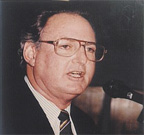West Indies cricket has long since become a virtual international television newscast.
The controversies and the chaos, the defeats and the decline dominate the bulletins. With more than enough to fill the reports, they obscure the positives, few as they may be.
So, this season, it has all been about the status of Chris Gayle and Shivnarine Chanderpaul, the two most senior players, following their straight-talking radio interviews that aired their grievances with board, team management and selectors.
Chairgate, as the reported flare-up between West Indies Cricket Board (WICB) chief executive Ernest Hilaire and West Indies Players Association (WIPA) president Dinanath Ramnarine at the meeting to sort out the Gayle issue has been inevitably dubbed, occupied more attention than the cricket.
Darren Sammy’s credentials as captain are so widely and repeatedly questioned that the head coach has felt compelled to beseech the critics to back off.
 The prelude to the series against India centred, not so much on the cricket as on its patronizing decision to leave its greatest player at home to rest prior to the far more significant series in England to follow.
The prelude to the series against India centred, not so much on the cricket as on its patronizing decision to leave its greatest player at home to rest prior to the far more significant series in England to follow.
Other spicy items have taken the headlines.
WICB director Sir Hilary Beckles’ analogy of Gayle as a notorious ‘don’ filled space for a couple of weeks.
The president of the Cooperative Republic of Guyana, no less, gained the desired media attention by parading at the ODI in Providence with a sign proclaiming “WICB is a disgrace”.
If noticed at all, upbeat cricket items such as the dramatic advance of Ravi Rampaul from obscurity to bowling spearhead, the arrival of Davendra Bishoo as a visionary selection, the development of Andre Russell as potentially quality all-rounder and the return of Adrian Barath and Fidel Edwards, fit and fast after his back operation, have been mere footnotes.
The fact that Russell, Barath, Darren Bravo and Kemar Roach are all under 23 and that the West Indies under-19s triumphed over Australia in both four-day and one-day formats in Dubai in April hint at a brighter future. Yet gloom and doom lead.

If it is up to the WICB, with the cooperation of WIPA, to provide the support such players require to progress, Rampaul provides the example of the individual responsibility that is also necessary but is so often missing.
A year ago, he might have despaired over his prospects.
He first wore West Indies colours as far back as 2000, a growing boy in the successful campaign in the under-15 international Costcutter Cup in England in 2000.
He then graduated through two under-19 World Cups, in New Zealand and Bangladesh, and into the senior team for 53 sporadic ODIs before he finally fulfilled his ambition of Test cricket in Australia in November, 2009.
It was a long and, in every sense, painful wait.
In July 2004, after the West Indies ODI series in England, Rampaul felt the sharp twinge just behind the shin bone, the first sign of the condition known as shin splints common to athletes who place pressure on their legs and the bane of fast bowlers.
The problem kept him out of the game for three years. When he returned in July 2007, for another ODI series in England, the layoff showed in his bulkier physique.
Fitness was an issue in his debut Tests, three in the 2009-10 series in Australia and two at home against South Africa a couple of months later. His returns were five wickets at an average cost of 109.75 each. Not surprisingly, he was dropped.
Coming up 26 and after his misfortune with injury, he could have thrown out his boots in hopelessness and confined himself to playing for and coaching Preysal, the club in central Trinidad where he had grown up to become the West Indies’ first new ball bowler of East Indian descent.
Instead, he chose not to waste the nine years he had waited to fulfil his ambition of Test cricket. He has revealed that, with the encouragement, indeed the insistence, of West Indies new head coach, Ottis Gibson, he worked incessantly on his fitness, as he did on his bowling rhythm and discipline.
He pounded the road and dropped pounds. He sent down ball after ball in the nets. His stamina noticeably improved as did his control.
At the same time, he also concentrated on his batting, an aspect of his game he had tended to neglect.
He hankered to return but it was not until the World Cup that his chance came – and only then because of Roach’s absence through illness in the last group match against India in Chennai.
His sixth ball was to be as crucial as any in his career. It rose from a length and just kissed the edge of the most famous bat in the game on its way to wicket-keeper Devon Thomas.
As Sachin Tendulkar turned to head back to the pavilion, Rampaul’s whoopng celebration was all to be heard above the deafening silence in the stands.
“It was the perfect ball at the perfect time, one of those moments in life you dream of,” he said afterwards.
Tendulkar’s opening partner, Gautam Gambhir, No.3 Virat Kohli and Zaheer Khan and Munaf Patel at the bottom of the order made up his five wickets, his first such return for the West Indies.
The performance would restore the self-belief that injury and disappointment had severely tested over the years.
The transformation is substantiated by his returns in the season’s Tests (11 wickets at 20.90 each in two matches against Pakistan, four at 27 in the first Test against India) as has the advance in his left-handed batting (a Test average of 23 and increasingly valuable contributions at No.9 hint at all-rounder potential).
The most astonishing aspect of his bowling are the early strikes that have shaken the foundations of opponents’ innings.
The sequence:
Pakistan 1st Test: 1st innings, second ball (5 for one); 2nd innings: third ball (two for one) and fifth ball (two for two). Pakistan 2nd Test: 1st innings: 21st ball (17 for one), 25th ball (22 for two).
India 1st Test: 1st innings, 11th ball (15 for one); 2nd innings, second ball (0 for one).
Twice he was denied another early victim by straightforward catches missed at slip. Sammy’s fumble off Rahul Dravid, then six on his way to 112, arguably cost the Test against India.
As Steve Waugh in 1995 (missed at 42, out for 200) and Inzamam-ul-Haq in 2005 (missed at nought, unbeaten 117) proved, batsmen of such calibre generally make the most of such generosity. Just as India did last week, Australia won in 1995 and Pakistan in 2005.
It was another case of the anguish and the ecstasy Rampaul has had to cope with throughout his career. That he has done so on his own, through sheer hard graft and dedication, is an example to those inclined to seek out other reasons for their troubles.









